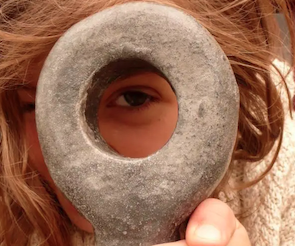Radiogenic- ‘Well suited in style or subject for broadcasting by radio.’
In Friday’s lecture we were learning about radiogenic factors, and I began thinking about what kinds of work are designed specifically for radio, compositions that don’t work in any other form. How can you utilise the distinctive qualities of radio to create an optimum piece?
“Radio affects most people intimately, person-to-person, offering a world of unspoken communication between writer-speaker and listener.” (McLuhan, 1964, p. 299.) This quote from Marshall McLuhan in his book ‘Understanding Media’ describes radio in the exact way I think about it. It’s different from other forms of media like film as there is this ‘unspoken communication’ which relies so heavy on the persons interpretation and integration with the piece. Of course this does exist within film as everybody connects the story to their own experience’s, however because of the visual cues you are given, it manipulates and directs your thoughts into more direct, synchronised feelings that most other viewers will be experiencing. When it comes to radio, it is a very different situation, first of all when you’re listening to radio you’re normally alone, which makes a huge difference to how you perceive and react to it, as listening to the radio can give you the sense that you’re the only one who can hear it, which is (most of the time) entirely not true. – This makes for a much more personal connection to what you’re hearing. Another factor relates to two of Sieveking’s laws – ‘Imagination is central’ & ‘The voice carries personality’, I think these two ideas around radio connect massively, and influence each other. Firstly, imagination is the sole reason radio is so different from other medians, without visuals, your whole perception of what you’re hearing is made in your imagination, you’re constantly constructing images in your mind based off of the sounds, voices, and atmospheres being created, which makes for a deeply unique experiences. As each person’s experiences have taught them to how relate themselves to and conceptualise the things they hear. This ties in with the idea of the voice carrying personality, as each tone in a voice, or slight movement in sound has a meaning, and emotionally, we have been trained to pick up and understand the slightest of differences in someones voice. This is of course differs for varying cultures, however there is a universal understanding when it comes to expressing emotions. This understanding of tonal changes crosses over with interpretation as depending on your upbringing, your ideas of what each change means may slightly differ and cause for a variety of interpretation throughout people, therefore also effecting how they’re imagining the sounds in a visual way.
Although when I started this project I was unaware of the term radiogenic, the concept of it was an important factor for our groups radio piece. As I have mentioned in other blogs, we wanted to create a piece that plays on perception and the idea that each person perceives a radio show their listening to uniquely. We aimed to create something that felt very surreal, and you could join in at anytime, a kind of surrealism that is much easier to portray through radio. Playing with silence and chaos, realistic and unrealistic sounds, creating an atmosphere that can’t have one definition, it is distinct for each listener. When it comes to this idea of subjective perception by individual listeners vs objective reality, we want them to overlap, our objective being that the content we have created doesn’t entirely make sense (we have created a story based off of our own interpretation of the script, but this story is not our objective), it doesn’t have a literal meaning, other than to show how relations and perceptions between listener vary.
So far we have written and recorded the script, using different voices and different amplitude levels of speaking which we are then going to collage and create (like we did with the script) something new and manipulated using layering and editing. Our next task is to record the foley which we have a distinct list of sounds, separated into two sections, realistic and surreal sounds, which I think will be the main factor into creating our atmosphere. Of course the voice will help to portray our concept and radiogenic feature, but the sounds that are attached will allow the listener to fully submerge into the piece and therefore allow deeper interpretations.
McLuhan, M. (1964) Understanding media: the extensions of man. New York: McGraw-Hill, p. 299.
